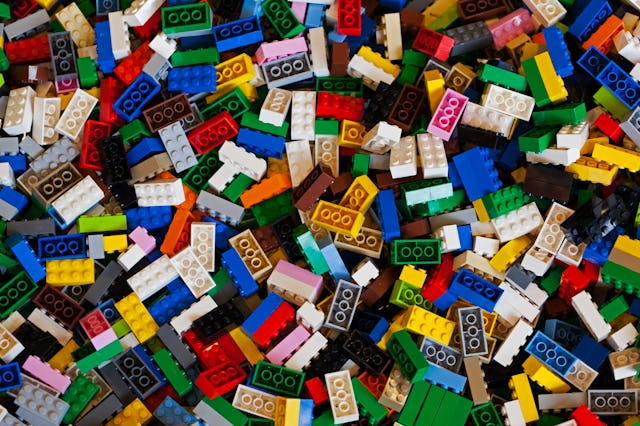A Group Of Doctors Swallowed Legos To Study How Safe It Is For Kids To Do It
Then they measured how long it took them to poop them out and then they wrote a paper about it.

No matter the item, it’s always a scary moment when your child swallows something that’s not food. Sometimes the item could be deadly, but other times, it will go on an exciting adventure through your kid’s body and end up in the potty with zero drama.
Andy Tagg, an ER doctor in Melbourne, Australia, knew that a lot of research had been done on the safety of a child swallowing a coin, but that none had been done on the second most commonly ingested items: small plastic objects and toy parts — specifically, Legos. He also knew that he had done it himself as a child. While trying to pry two pieces apart with his teeth, they went down the hatch (and then, later, out the other hatch).
Tagg also wanted to get into the spoof issue of the British Medical Journal, a very serious medical journal that puts out a spoof issue each Christmas (example: a past article explores whether Dr. Brown Bear from Peppa Pig contributes to unrealistic expectations of primary care). He saw an opportunity to spread awareness about ingested objects, do some meaningful research, and also have a little fun.
He recruited five other pediatric doctors who also saw tons of kids come into the ER after swallowing objects. Dr. Katie Knight shared in an oral history of the experiment that “probably every other shift you work, someone comes in having swallowed something.”
They all picked out a Lego head, poured a glass of water, and down they went. You can watch them swallow their Legos on YouTube below.
The paper, which was eventually published in The Journal of Pediatrics and Children’s Health, is pretty hilarious, while also pretty helpful for parents. It’s called, “Everything Is Awesome: Don't Forget The Lego” and contains extremely scientific and not at all juvenile units of measurement such as the Stool Hardness and Transit (SHAT) score and the Found and Retrieved Time (FART) score.
It also includes very detailed and serious images and graphs.
In the end, it took an average time of 1.71 days for the doctors to find their Lego heads in their stool. One doctor never found his Lego head; it’s unclear whether he simply missed its passing or if he will forever be part-Lego head. None of the participants suffered any complications.
The conclusion: If your kiddo swallows a Lego, it’s probably safe to let nature run its course and to skip the ER bill.
Both the paper itself and the oral history the scientists gave to Defector are completely hilarious and totally worth the reads. And one doctor, Dr. Henry Goldstein, keeps his Lego head on his hospital lanyard. Gross.
It’s important to note that not everything is as worry-free as a Lego. According to the American Academy of Pediatrics, while small plastic objects and items like coins smaller than quarters (the most commonly swallowed objects) can uneventfully pass through your child’s digestive system, there are a few items that require a trip to the ER and immediate action. Button batteries can cause burns in the esophagus that may be fatal and require immediate, urgent removal. Swallowed magnets, sharp objects, or objects the size of a quarter or larger should also involve a trip to the doctor. If your child experiences stomach pain or vomiting after swallowing something, you should also head to the hospital immediately.
But a Lego head? All that’s needed is time and a little bit of a sense of humor.
This article was originally published on